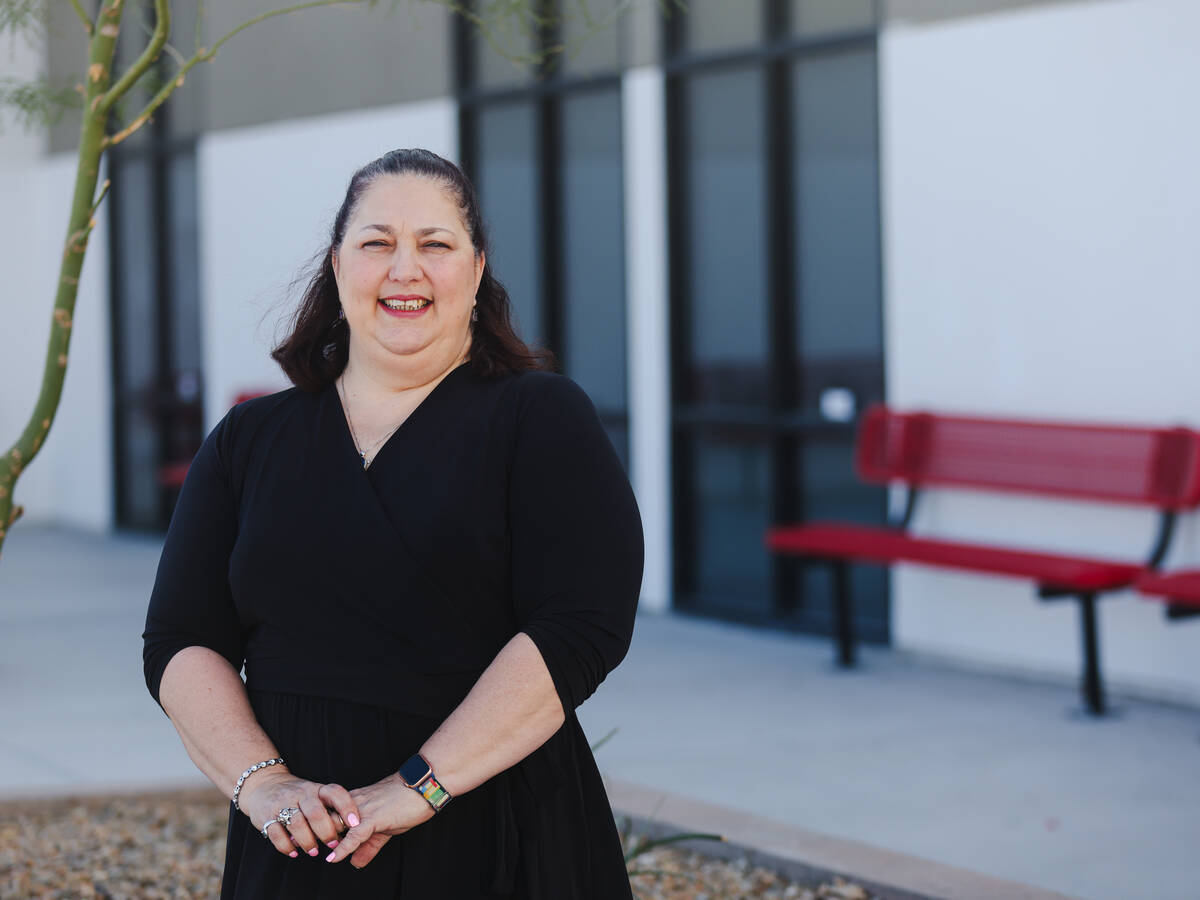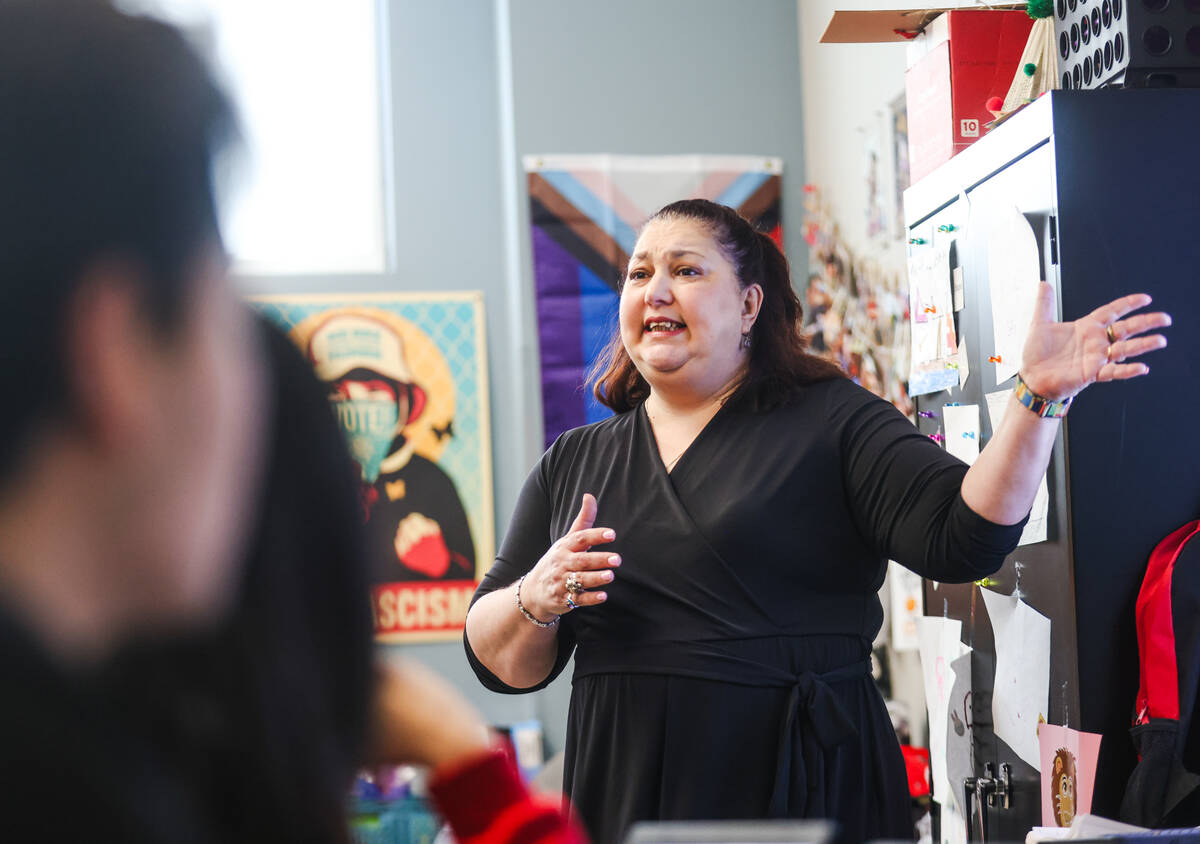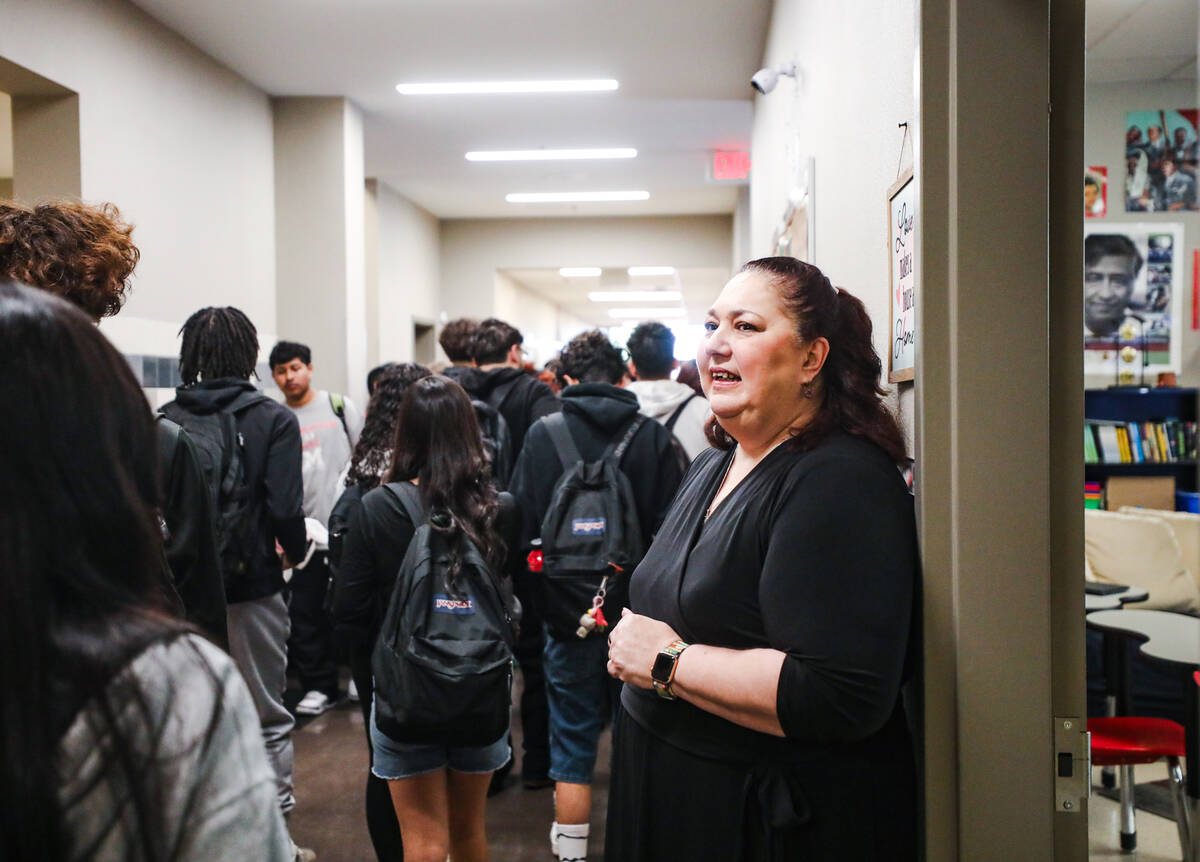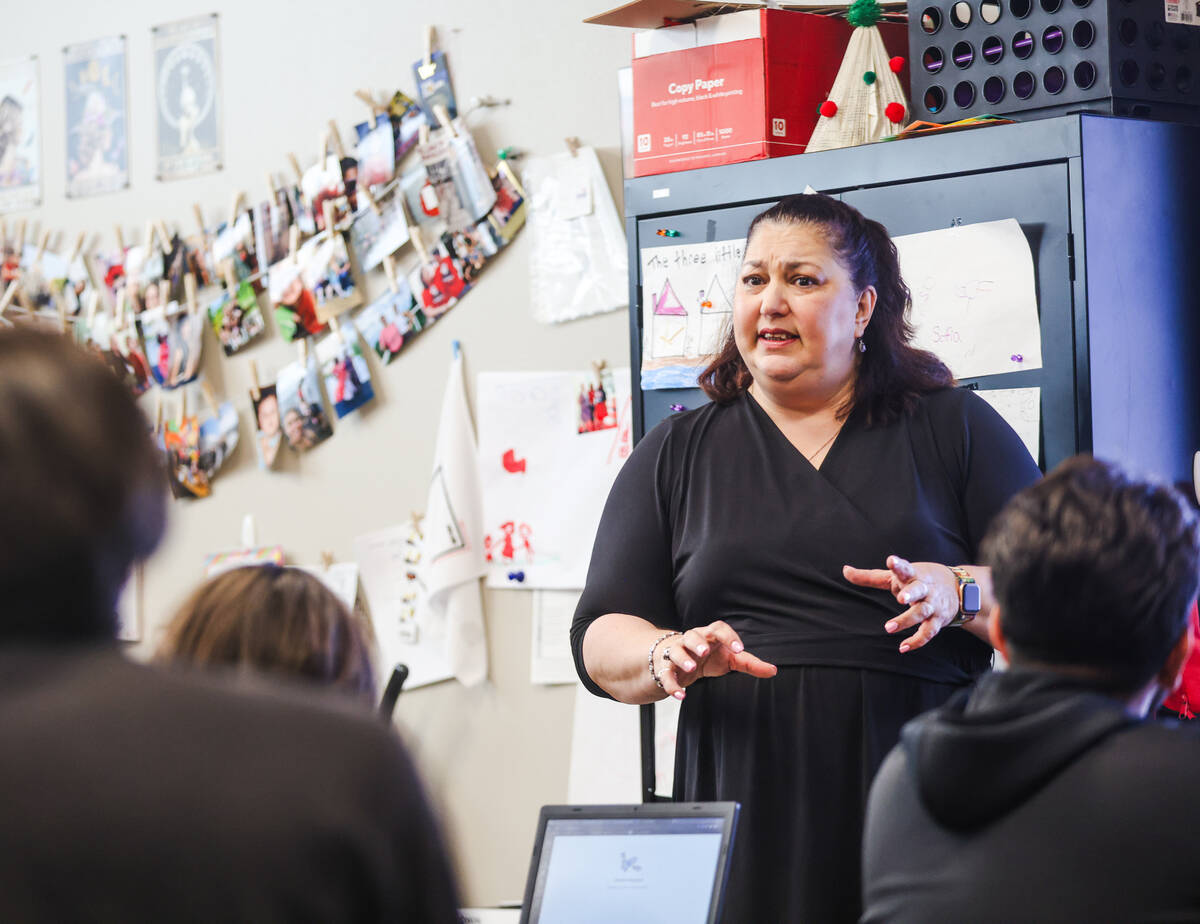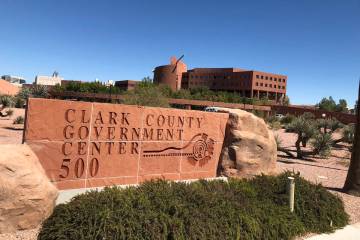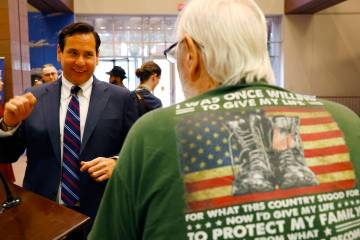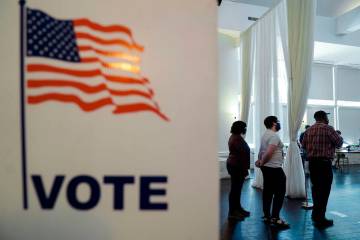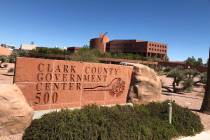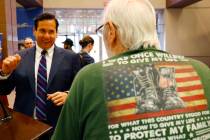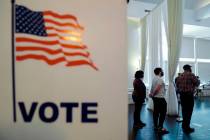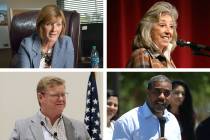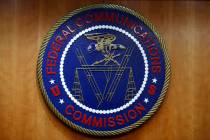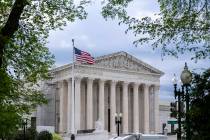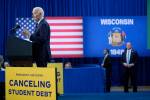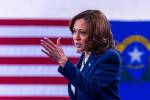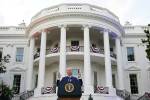‘The way out’: Veteran Vegas teacher finds student loan debt relief after 30 years
Tillie Torres has always told her students that education is the way out of poverty. But with more than $80,000 of student loan debt, the Mater Academy English teacher found her own words hypocritical.
She thought she’d die with the debt, until it was canceled under the federal Public Service Loan Forgiveness program last month.
“Once I got over being overwhelmed and shocked, I felt like a weight of rocks had been lifted off my back,” the 55-year-old said.
Torres is one of nearly 4,400 Nevadans who received public service loan forgiveness after the Biden administration reformed the program. More than 9,000 other Nevadans recently had student debt canceled through fixes to income-driven repayment, according to the U.S. Department of Education.
‘I thought I was doing the right thing’
Torres graduated in 1992 from Hawaii Pacific University with $43,000 in student loan debt. In her 20s, she got her loan payments deferred while raising her children as she she dealt with a cancer diagnosis and an injury her husband suffered while on a job.
Once she got a full-time teaching job at 30, she began making $100 to $200 payments on her loans every month, she said. Despite 20 years of payments, her debt grew to $87,000, she said.
In order to cut down that debt, she’d have to pay around $600 a month, which she couldn’t afford, Torres said.
“I thought I was doing the right thing,” Torres said.
Her daughter, who is also an educator, told her to apply to the forgiveness program, which was first introduced in 2007 to encourage more people to pursue careers in public service. It forgives the remaining balance on a person’s student loans if they’re employed by a government or nonprofit organization. The person must have made the equivalent of 120 monthly payments on the loan before the remaining balance is forgiven.
Torres applied four or five years ago but had difficulty proving that she consistently worked at a Title I school for 10 years — a requirement with the program — because the school’s ranking changed multiple times over the years, she said. She applied, but then COVID hit, and she was in limbo again, she said.
Then on Feb. 6, she received a letter that showed her balance owed was zero dollars, Torres said. Once she realized it wasn’t a mistake, she started crying at her dining room table, she said.
Because she wasn’t paying the regular payment of $600 a month, not all her monthly payments had counted to the 10 years of payments needed for loan forgiveness, Torres said. But the Department of Education changed the definitions of what a countable loan payment was, so she qualified, she said.
“Real people are affected by these policies, right?” Torres said. “We’re not really bailing people out. You know? They’ve been doing the right things. It’s just, things didn’t go the way we thought they were. I don’t think we understood compound interest at 20 (years old).”
Relief for 1,650 Nevadans
Those reforms came after the Biden administration unsuccessfully pushed for outright forgiveness of up to $20,000 of people’s student loans. That initiative was blocked by the U.S. Supreme Court, which ruled that the attempt to forgive an estimated $430 billion of federal student loan debt involved “exhaustive rewriting of the statute.”
At his State of the Union address this week, Biden said that after he was told he couldn’t universally change the way the government dealt with student loans, he “fixed two student loan programs that already existed to reduce the burden of student debt” for people in public service.
He said he wants to make college more affordable and suggested continuing to increase Pell Grants and increase investments to minority-serving institutions.
“Such relief is good for the economy, because folks are now able to buy a home, start a business, start a family,” he said.
In August 2023, the Biden administration announced the Saving on a Valuable Education (SAVE) Plan as a new income-driven repayment plan that calculates people’s monthly payment amount based on their income and family size.
The plan also prevents people’s balance from growing due to unpaid interest. If someone makes their full monthly payment, but it isn’t enough to cover the interest that was accrued, the government covers the rest, according to Federal Student Aid with the U.S. Department of Education.
In February, the SAVE Plan began to forgive loans for people who originally borrowed $12,000 or less after they’ve been paying for 10 years. In Nevada, it means 1,650 borrowers will have their loans canceled, totaling $13.9 million, according to the U.S. Department of Education.
And in a few months, other aspects of the plan will take effect, including undergraduate payments going down from 10 percent of a person’s discretionary income to 5 percent, and possible loan forgiveness for more people after at least 10 years of paying.
Future of education
Programs such as this could encourage more students to seek higher education, according to Daniel Archer, vice chancellor for academic and student affairs at Nevada System of Higher Education.
“I think for a lot of students, you know, when they’re coming into college, I don’t necessarily think that all of them were thinking about what the repayments (are) gonna look like. Some do, but I think this is creating an avenue for us to bring in more students.”
Across Nevada’s higher education institutions, anywhere from 2 percent to 23 percent of students take out loans, and the median totals for graduates are all under $20,000, Archer said. About 11.3 percent of Nevada residents have some sort of student loan debt, he said.
At UNLV, roughly one third of the university’s undergraduates take out student loans, according to Financial Aid Director Zachary Goodwin, although those who do take out loans borrow at amounts below the national average.
The SAVE Plan could be favorable for graduate and professional students who tend to borrow types of federal student loans that can be brought into repayment while they’re attending school, according to Goodwin. It helps accelerate their path toward paying off their loans or forgiveness of their loans, depending on their careers, he said.
NSHE’s focus is to help students have as little debt as possible, Archer said. NSHE wants students to look at scholarship opportunities, but the SAVE plan “is a really good option for some students who are on fixed incomes,” as it provides a more manageable repayment plan process, Archer said. Repayment aligns more with what someone is making, Archer said.
“It’s a positive, because it supports affordability and puts students in a position where they can still have a car, a home, do all the things you want to do when you are advancing and you are completing your degree, program or credential,” Archer said.
Torres said with those student loan forgiveness and repayment programs, she feels that young people can actually get an education and find a way out of poverty. She herself can qualify on her own to buy a house or a car, she said.
“Poverty is stifling and traumatizing,” Torres said. “And unless you’ve been there, I don’t think you understand the complete immobility that you can feel in that environment. … It is absolutely true education is the way out.”
Contact Jessica Hill at jehill@reviewjournal.com. Follow @jess_hillyeah on X.



